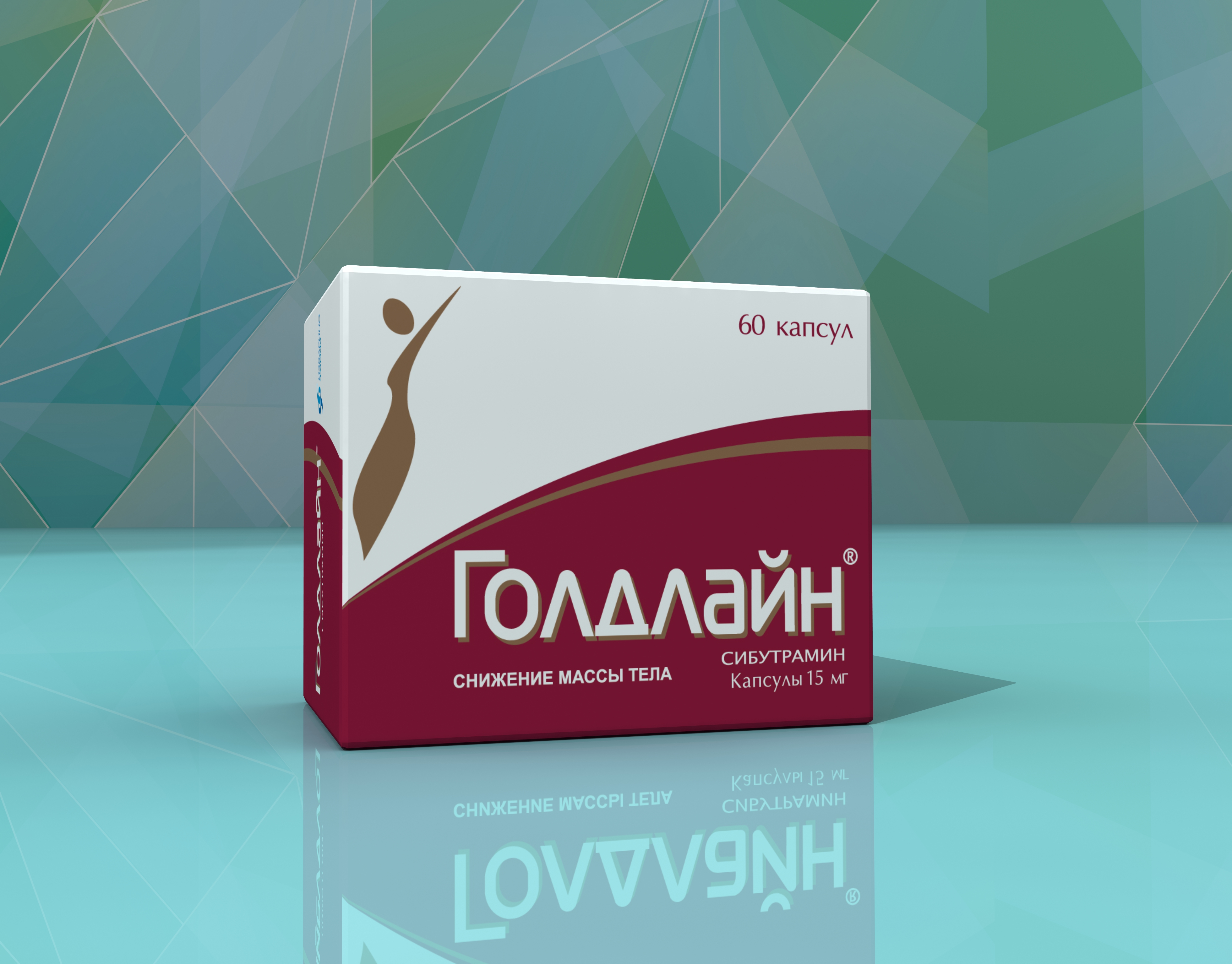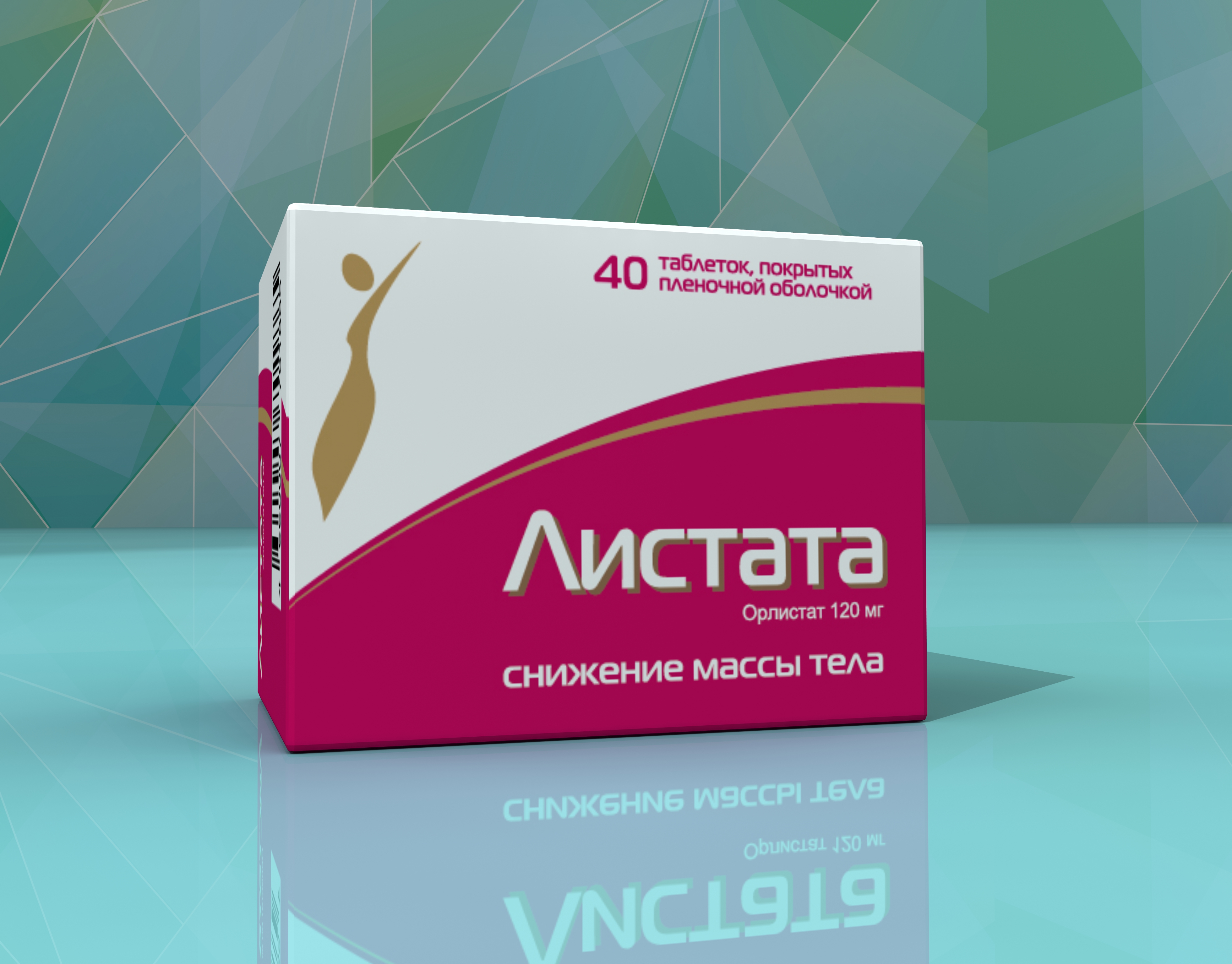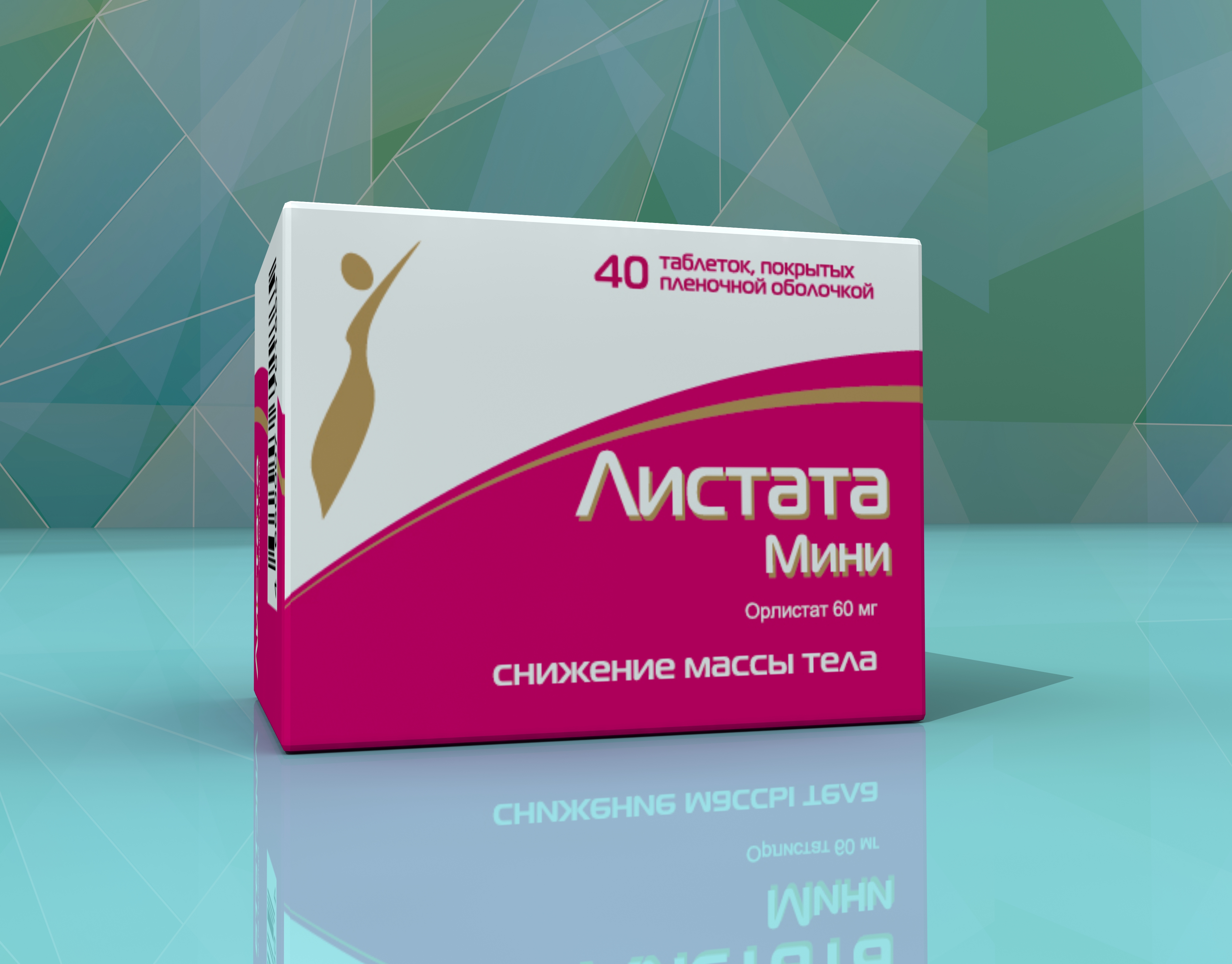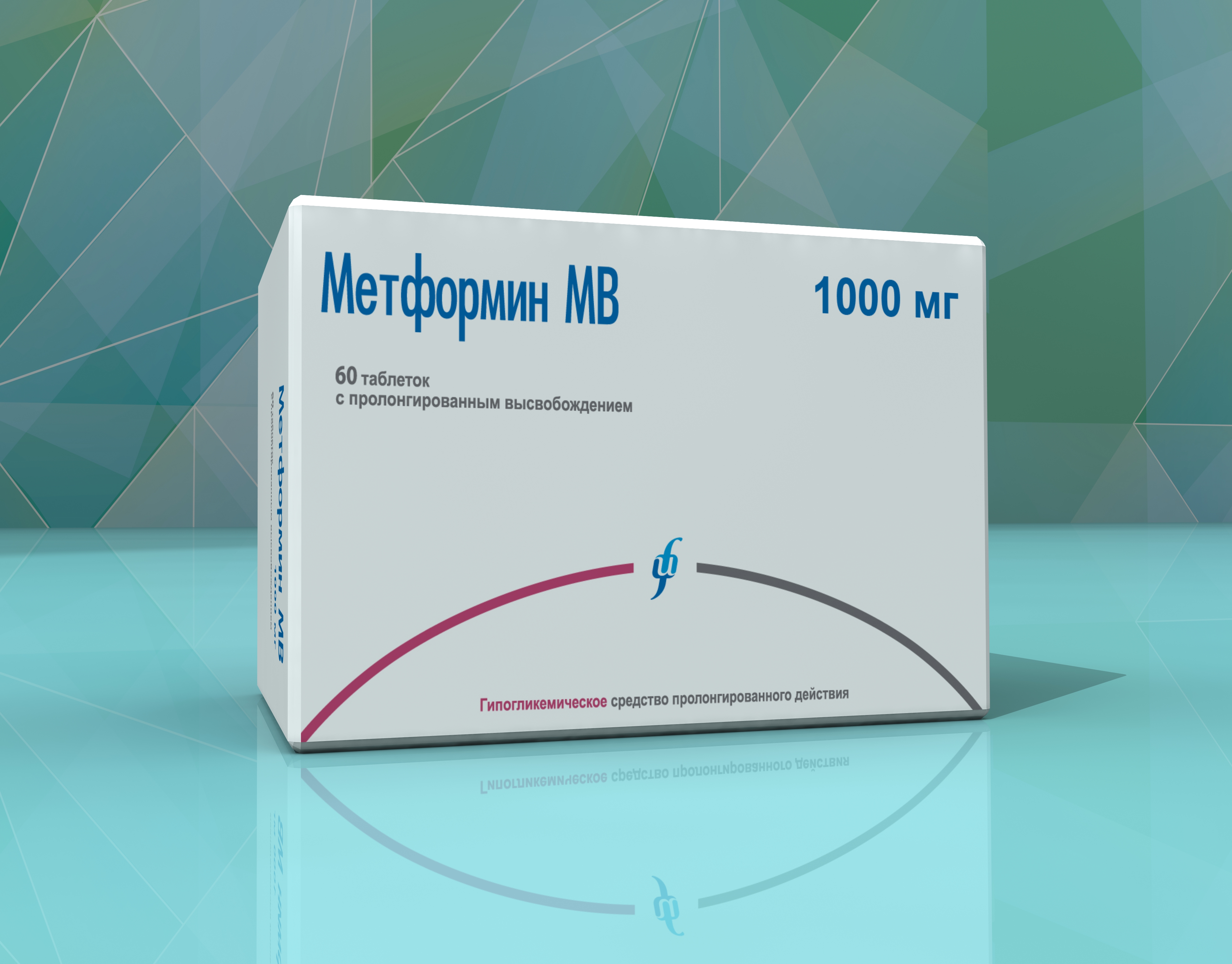Endocrinology
The interests of the company are focused on the two most common endocrinological diseases: obesity and type 2 diabetes.
The interests of the company are focused on the two most common endocrinological diseases: obesity and type 2 diabetes.

1 capsule contains:
Capsules 10 mg:
Active ingredient: sibutramine hydrochloride monohydrate 10.00 mg.
Capsules 15 mg:
Active ingredient: sibutramine hydrochloride monohydrate 15 mg
Capsules 10, 15 mg. 10 capsules in a blister of aluminum foil and PVC/PVDC film; 1, 3, 6, 9 or 12 blisters with a patient leaflet in a carton pack .
• alimentary obesity with body mass index (BMI) of 30 kg/m2 or more;
• alimentary obesity with body mass index (BMI) of 27 kg/m2 or more combined with type 2 diabetes or dyslipoproteinemia.
Goldline is administered orally once a day. The dose is defined individually depending on tolerance and clinical efficacy. The initial recommended dose is 10 mg, in case of poor tolerance administration of 5 mg is possible. Capsules should be taken in the morning without chewing, with sufficient amount of liquid (glass of water). The product can be taken both on an empty stomach and combined with a meal. If during 4 weeks from the start of treatment a 5% or more decrease in body weight was not achieved, the dose should be increased to 15 mg per day.
For patients that do not respond well to the therapy, i.e. those whose body weight loss did not reach 5% of the initial level in 3 months, Goldline therapy should not last longer than 3 months. The treatment should not be continued where in further therapy after the achieved body weight loss the patient gains 3 kg or more again. The duration of treatment should not exceed 2 years because there is no efficiency and safety data for longer periods of sibutramine administration.
The Goldline therapy should be combined with diet and exercise under supervision of a physician having practical experience in obesity treatment.

Composition per 1 capsule for dosage of 10 mg + 158.5 mg:
Active ingredients:
Sibutramine hydrochloride monohydrate - 10.0 mg, microcrystalline cellulose - 158.5 mg.
Composition per 1 capsule for the dosage of 15 mg + 153.5 mg:
Active ingredients:
Sibutramine hydrochloride monohydrate - 15.0 mg, microcrystalline cellulose - 153.5 mg.
Capsules 10 mg + 158.5 mg; 15 mg + 153.5 mg. 10 or 15 capsules in a blister of PVC film and aluminum printed glazed foil.
1, 3, 6, 9, or 12 blisters of 10 capsules each, or 2, 4, 6, or 8 blisters of 15 capsules each, together with instructions for medical use, are placed in a carton pack.
Goldline® PLUS is indicated for body weight loss in the following conditions:
- alimentary obesity with body mass index (BMI) of 30 kg/m2 or more;
- alimentary obesity with body mass index (BMI) of 27 kg/m2 or more combined with type 2 diabetes mellitus or dyslipoproteinemia.
Goldline® PLUS is taken orally once a day. The dose is defined individually depending on tolerance and clinical efficacy.
The recommended initial dose of sibutramine is 10 mg per day. Capsules should be taken in the morning without chewing, with sufficient amount of liquid (glass of water). The product can be taken both on an empty stomach and combined with a meal. If during 4 weeks from the start of treatment an at least 2 kg decrease in body weight was not achieved, the dose should be increased to 15 mg per day. For patients that do not respond well to the therapy, i.e. those whose body weight loss did not reach 5% of the initial value in 3 months, Goldline® PLUS therapy should not last longer than 3 months. The treatment should not be continued where in further therapy after the achieved body weight loss the patient gains 3 kg or more again. The duration of treatment should not exceed 1 year because there is no efficiency and safety data for longer periods of sibutramine administration.
The Goldline® PLUS therapy should be combined with diet and exercise under supervision of a physician having practical experience in obesity treatment.

1 film-coated tablet contains:
Active substance: orlistat - 120.0 mg;
Film-coated tablets 120 mg. 10 tablets in a blister of polyvinyl chloride film and aluminum printed and glazed foil.
1, 2, 3, 6, or 9 blisters with instructions for medical use are placed in a carton pack.
Long-term therapy for obese patients with a body mass index (BMI) of at least 30 kg/m2 or overweight patients with a BMI of at least 28 kg/m2, including those with risk factors associated with obesity, in combination with a mildly hypocaloric diet.
In combination with hypoglycemic drugs (metformin sulfonylurea derivatives and/or insulin) and/or mildly hypocaloric diet in overweight or obese patients with type 2 diabetes mellitus.
Oral with water.
Therapy for obese patients with a BMI of at least 30 kg/m2 or overweight patients with a BMI of at least 28 kg/m2, including those with risk factors associated with obesity, in combination with a mildly hypocaloric diet.
Adults and children over 12 years old.
The recommended dose of Listata is 1 tablet (120 mg) with every main meal (with meal or no later than 1 hour after meal).
In combination with hypoglycemic drugs (metformin sulfonylurea derivatives and/or insulin) and/or mildly hypocaloric diet in overweight or obese patients with type 2 diabetes mellitus
Adults
The recommended dose of Listata is 1 tablet (120 mg) with each main meal (during or up to one hour after the meal).
If a meal is missed, the dose of Listata may be omitted.
Listata should be administered in combination with a balanced, mildly hypocaloric diet that contains no more than 30% of calories from fat. The daily intake of fat, carbohydrate and protein should be distributed over three main meals.
Doses of Listata above the recommended one (120 mg 3 times a day) do not provide a stronger therapeutic effect.
Efficacy and safety of Listata in patients with renal and/or hepatic impairment, as well as geriatric patient and children below the age of 12 have not been investigated.

1 film-coated tablet contains:
orlistat - 60.0 mg;
Film-coated tablets 60 mg.
10 tablets in a blister of polyvinyl chloride film and aluminum printed and glazed foil. 1, 2, 3, 6, or 9 blisters with instructions for use are placed in a carton pack.
Overweight reduction in adults with a body mass index (BMI) > 28 kg/m2 when used only in combination with a mild diet that contains no more than 30% of calories from fat.
Oral. The recommended dose is 60 mg (1 tablet) 3 times daily with water, with each main meal, immediately before, during or up to one hour after the meal. If a meal is missed or a meal does not contain fat, the dose of Listata Mini may be omitted.
The maximum daily dose of the product is 180 mg (no more than 3 tablets per day). Orlistat should be taken only at recommended doses. The course of treatment should not exceed 6 months.
It is recommended that the diet and exercise regimen should be followed before the start of treatment with Listata Mini. If in 12 weeks of Listata Mini therapy no weight loss is observed (i.e. at least loss of less than 5%of the initial mass), it is necessary to consult a doctor to decide whether to continue further therapy.
Usage is special clinical groups of patients
Geriatric patients (>65y.o.)
There are limited data on orlistat usage in geriatric patients. However, given that the absorption of orlistat is minimal, dose adjustment in this group of patients is not required.
Patients with renal and hepatic impairment
Action of orlistat in patients with renal and/or hepatic impairment has not been investigated. However, given that the absorption of orlistat is minimal, dose adjustment in patients with hepatic and/or renal impairment is not required.
Pediatric use
Usage of the product in children and adolescents below 18 years old is contraindicative due to absence of safety and efficacy data for this age group.

1 film-coated tablet 500 mg contains:
Active ingredient: metformin hydrochloride - 500.0 mg.
1 film-coated tablet 850 mg contains:
Active ingredient: metformin hydrochloride - 850.0 mg.
1 film-coated tablet 1000 mg contains:
Active ingredient: metformin hydrochloride - 1000.0 mg.
Film-coated tablets, 500 mg, 850 mg, 1000 mg.
10 or 15 tablets in a blister of PVC film and aluminum printed glazed foil or 30 or 60 tablets in a bottle or jar sealed with a tamper-evident or ordinary polyethylene cap.
1 bottle or jar or 3, 6, 9 or 12 blisters
10 tablets in each or 2, 4, 6 or 8 blisters 15 tablets in each with instructions for medical use are placed in a carton pack.
Treatment of type 2 diabetes mellitus, particularly in obese patients, when dietary management and exercise alone is not effective:
• in adults as monotherapy or in combination with other oral hypoglycemic agents or with insulin;
• in children over 10 years old as a monotherapy or in combination with insulin.
Prevention of type 2 diabetes in patients with prediabetes with additional risk factors for developing type 2 diabetes when lifestyle changes did not result in adequate glycemic control.
Taken orally.
Adults:
Monotherapy and combination with other oral hypoglycemic agents for type 2 diabetes:
• The ordinary initial dose is 500mg or 850mg taken twice or three times a day after or during meals.
• The dose should be adjusted every 10-15 days basing on blood glucose concentration control. Gastrointestinal side effects can be reduced if the dose is increased slowly.
• The maintenance daily dose is generally 1500-2000 mg. Gastrointestinal side effects can be reduced if the daily dose is divided into 2-3 doses. The maximum daily dose is 3000 mg divided into 3 doses.
• Those who receive metformin doses of 2000-3000 mg can be switched to Metformin 1000 mg. The maximum recommended daily dose is 3000 mg divided into 3 doses.
In case of switch from another hypoglycemic agent the treatment should be stopped and Metformin administration should be started in the dose specified above.
Combination with insulin: for better control of blood glucose concentrations, for patients with type 2 diabetes mellitus metformin and insulin can be used as combined therapy. The ordinary initial dose of Metformin is 500 mg or 850 mg 2-3 times a day, while the dose of insulin is selected based on the blood glucose concentration.
Pediatric use: in children over 10 years old Metformin can be used both as monotherapy and combined with insulin. The ordinary initial dose is 500mg or 850mg once a day after or during meal. In
10-15 days the dose should be adjusted based in blood glucose concentrations. The maximum daily dose is 2000 mg divided into 2-3 doses.
Monotherapy of type 2 diabetes mellitus: the ordinary daily dose is 1000-1700 mg divided in 2 doses after or during meals.
Regular monitoring of glycaemic control is recommended in order to evaluate the need for further therapy.
Patients with Renal Impairment: metformin can be used in patients with moderate renal failure (creatinine clearance 45-59 ml/min) only in the absence of conditions that may increase the risk of lactic acidosis.
In patients with creatinine clearance of 45-59 ml/min, the initial dose is 500 mg or 850 mg once a day. The maximum daily dose is 1000 mg divided into
2 doses.
Renal function should be carefully monitored (every 3-6 months).
If creatinine clearance is below 45 ml/min, administration of the product should be stopped immediately.
Elderly patients: due to potential for decreased renal function, the dose of metformin should be selected under regular monitoring of renal function (creatinine blood concentration should be controlled at least 2-4 times a year).
Duration of treatment: Metformin should be taken daily, without interruption. If treatment is discontinued, the patient should inform the doctor.

1 extended-release tablet 500 mg contains:
Active ingredient: metformin hydrochloride - 500.00 mg.
1 extended-release tablet 750 mg contains:
Active ingredient: metformin hydrochloride - 750.00 mg.
1 extended-release tablet 850 mg contains:
Active ingredient: metformin hydrochloride - 850.00 mg.
1 extended-release tablet 1000 mg contains:
Active ingredient: metformin hydrochloride - 1000.00 mg.
Extended-release tablets 500 mg, 750 mg, 850 mg, 1000 mg.
10 or 15 tablets in a blister of PVC film and aluminum printed glazed foil or 60 tablets in a bottle or jar sealed with a tamper-evident or ordinary polyethylene cap.
1 bottle or jar or 3, 6, 9 or 12 blisters
10 tablets in each or 2, 4, 6 or 8 blisters 15 tablets in each with instructions for medical use are placed in a carton pack.
Treatment of type 2 diabetes mellitus in adults, particularly in obese patients, when dietary management and exercise alone is not effective:
• as monotherapy;
• in combination with other oral hypoglycemic agents or with insulin.
Metformin MB is taken orally. Tablets must be swallowed whole and not chewed with sufficient amount of liquid, once a day with the evening meal.
The dose of Metformin MB is selected by the physician individually for each patient based on the results of blood glucose concentration control.
Monotherapy and combination with other oral hypoglycemic agents
• For patient who did not receive metformin the recommended initial dose of Metformin MB is 500 mg, 750 mg or 850 mg once a day during the evening meal.
• The dose should be adjusted every 10-15 days basing on blood glucose concentration control. Gastrointestinal side effects can be reduced if the dose is increased slowly.
• For patient who previously received metformin therapy the initial dose of Metformin MB should be equivalent to the daily dose of ordinary-release tablets.
• For patients receiving metformin in the form of ordinary-release tablets in doses above 2000 mg switching to Metformin MB is not recommended.
In case of switch from another hypoglycemic agent the treatment should be stopped. Metformin dose selection is started from Metformin MB 500 mg, 750 mg or 850 mg with possible subsequent switch to Metformin MB 1000 mg.
Combination with insulin
For better control of blood glucose concentrations, metformin and insulin can be used as combined therapy. The ordinary initial dose of Metformin MB is one tablet 500 mg, 750 mg and 850 mg once a day during evening meal, while the dose of insulin is selected based on the blood glucose concentration. Further, the switch to Metformin MB 1000 mg is possible.
Daily dose
The maximum recommended dose of Metformin MB:
If adequate glycemic control is not achieved, the dose of Metformin MB can be increased to the maximum daily dose.
Gastrointestinal side effects can be reduced if the daily dose is split into 2 doses.
If adequate blood glucose control is not achieved with the maximum recommended dose taken once a day during the evening meal the maximum daily dose can be split into 2 doses:
If adequate blood glucose control is not achieved with the maximum recommended doses of metformin in the form of extended-release tablets, switching to metformin in the form of ordinary-release tablets for the maximum daily dose of 3000 mg can be considered.
Patients with renal impairment
Metformin can be used in patients with moderate renal failure (creatinine clearance 45-59 ml/min) only in the absence of conditions that may increase the risk of lactic acidosis. The initial dose is 500 mg, 750 mg or 850 mg once daily. The maximum daily dose is 1000 mg. Renal function should be carefully monitored every 3-6 months. If creatinine clearance is below 45 ml/min, administration of the product should be stopped immediately (see section ‘Contraindications’).
Geriatric patients
Metformin doses for elderly patients are adjusted on the basis of renal function assessment which should be regularly monitored at least twice a year (see section ‘Warnings and Precautions’).
Duration of treatment
Metformin MB should be taken daily, without interruption. If treatment is discontinued, the patient should inform the doctor.
Missed dose
If a dose is missed, the patient should take the next dose at the usual time. A double dose of Metformin MB should not be taken.